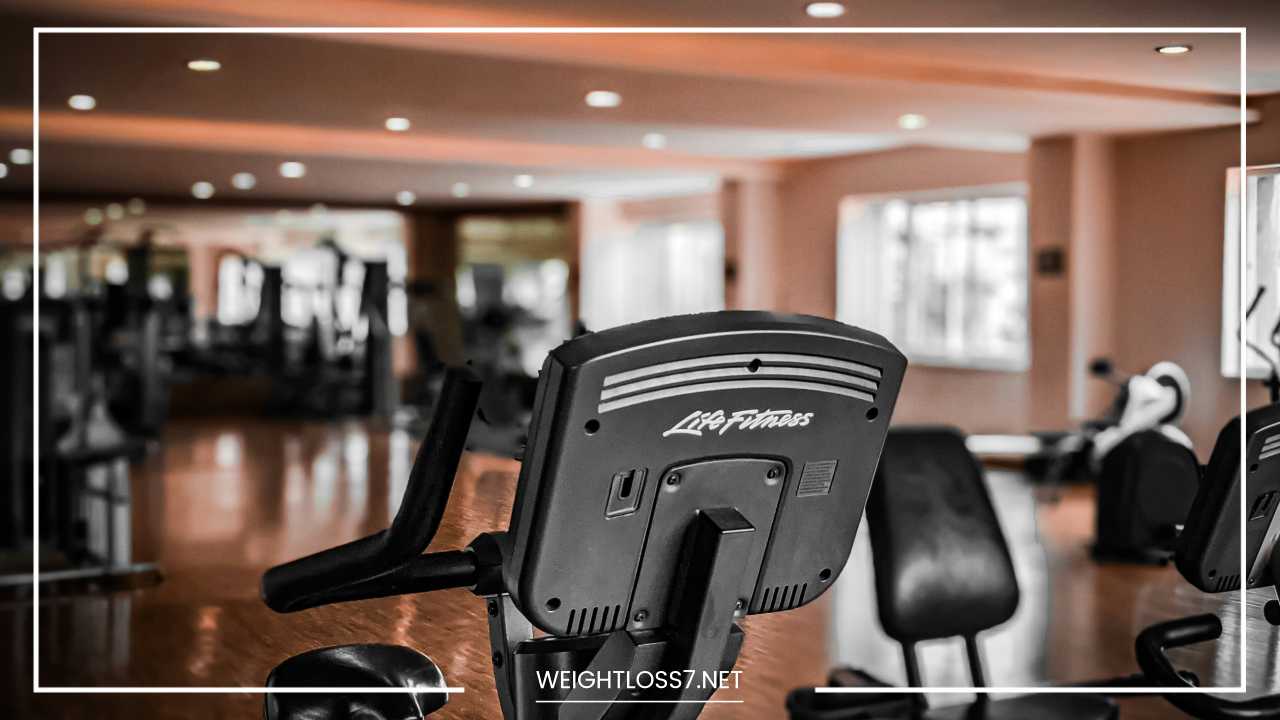Chronic Cardio And The Cortisol Conundrum

Chronic Cardio
Chronic Cardio And The Cortisol Conundrum: Unveiling the Science and Finding Fitness Harmony
For decades, cardio has been a fitness staple. From pounding the pavement to conquering the elliptical, it’s been synonymous with weight loss and a healthy heart.
But recently, whispers of “chronic cardio causing weight gain” and the dreaded “cortisol conundrum” have emerged, leaving fitness enthusiasts wondering if their daily jogs are actually working against them.
So, what’s the real story behind chronic cardio and cortisol? Is there a tipping point where your runs become counterproductive? Let’s embark on a scientific exploration, debunking myths and finding a harmonious balance in your fitness routine.
Unpacking the Concept: What is Chronic Cardio?
Chronic cardio refers to the consistent practice of endurance exercises like running, cycling, or swimming for extended periods.
While a brisk 30-minute jog might be considered moderate cardio, the realm of chronic cardio delves into daily sessions lasting an hour or more.
The concerns surrounding chronic cardio primarily stem from its potential to:
- Elevate Cortisol Levels: Cortisol, often referred to as the stress hormone, plays a complex role in regulating metabolism. Chronically elevated cortisol levels are associated with increased belly fat storage and muscle breakdown.
- Reduce Calorie Burning: The theory proposes that the body adapts to chronic cardio by becoming more efficient, burning fewer calories during exercise.
- Induce Overtraining: Pushing yourself too hard with chronic cardio can lead to overtraining syndrome, a state characterized by fatigue, decreased performance, and a higher risk of injury.
The Cortisol Conundrum: Separating Fact from Fiction
While cortisol does influence fat storage, the link between chronic cardio and significantly elevated cortisol levels is less clear-cut than initially thought. Studies have shown that moderate-intensity cardio, even in chronic settings, doesn’t lead to sustained cortisol spikes.
The bigger picture of cortisol and weight loss is more intricate. While chronic stress can undoubtedly contribute to weight gain, the impact of exercise-induced cortisol is likely temporary and outweighed by the overall calorie deficit created by exercise.
Think of it this way: Your body perceives exercise as a stressor, and cortisol levels might rise temporarily. However, a well-trained body adapts and recovers quickly, bringing cortisol levels back down.
The Calorie Cycle: The Real Culprit Behind Weight Gain
If chronic cardio doesn’t directly sabotage your weight loss goals through cortisol, what might be happening? The culprit could be the “calorie cycle,” a phenomenon that often trips up fitness enthusiasts.
Here’s how it plays out: We often overestimate the number of calories burned during long cardio sessions. This can lead to unconsciously consuming more calories throughout the day to compensate for the perceived energy expenditure. This imbalance between calorie intake and output – regardless of the exercise method – can lead to weight gain.
For example, imagine burning 500 calories during an hour-long run. Feeling accomplished, you might reward yourself with a post-workout snack or a slightly larger dinner, unknowingly consuming those 500 calories back (or even more). This undermines your weight loss efforts.
Finding the Fitness Sweet Spot: Intensity, Variety, and Balance
So, does this mean chronic cardio is all bad? Not at all. Here’s how to strike a harmonious balance in your fitness routine:
- Embrace Variety: Don’t get stuck in a cardio rut. Introduce a mix of activities to keep your workouts interesting and challenge your body in different ways. Consider incorporating strength training alongside cardio. Strength training helps build muscle mass, which in turn, increases your basal metabolic rate (BMR) – the number of calories you burn at rest. This can be more effective for long-term weight management and overall fitness.
- Explore HIIT: High-Intensity Interval Training (HIIT) involves alternating between short bursts of intense activity and periods of recovery. Studies suggest HIIT can be just as effective, if not more so, for burning calories in a shorter amount of time compared to steady-state cardio. This can be a great option for those short on time or looking to maximize their calorie burn.
- Listen to Your Body: Don’t push yourself to exhaustion. Overtraining can lead to injuries, decreased performance, and yes, even elevated cortisol levels. Take rest days and prioritize sleep for optimal recovery. Your body needs time to repair and rebuild after challenging workouts.
- Track Your Calories: Be mindful of your calorie intake. Use a fitness tracker or app to monitor your daily calorie expenditure and adjust your diet accordingly. Aim to create a sustainable calorie deficit for weight loss, but don’t restrict yourself excessively.
- Fuel Your Workouts: Don’t neglect proper nutrition. Eating a balanced diet with adequate protein and complex carbohydrates will provide your body with the energy it needs to power through your workouts and support recovery. Consider consulting a registered dietitian or nutritionist for personalized guidance.
Chronic Cardio and Beyond the Scale: A Spectrum of Health Benefits
While weight loss might be a primary goal for some, the benefits of chronic cardio extend far beyond the scale. Here’s a deeper dive into some of the reasons to keep cardio as part of your routine:
- A Heart of Gold: Regular cardio strengthens your heart and lungs, reducing your risk of developing heart disease, stroke, and high blood pressure. It improves your cardiovascular health by increasing your body’s ability to transport oxygen throughout your system, keeping your heart pumping efficiently.
- Stress Buster and Mood Booster: Exercise is a natural mood enhancer and can help manage stress. Chronic cardio, like running or swimming, can be a form of active meditation, promoting relaxation and reducing anxiety. The release of endorphins during exercise also contributes to feelings of well-being and happiness.
- Endurance Engine: Chronic cardio improves your body’s ability to use oxygen efficiently, leading to better endurance and stamina. This translates to improved performance in all your physical activities, whether it’s conquering a long hike, keeping up with the kids, or simply having the energy to tackle your daily tasks.
- Strong Bones and Healthy Joints: Regular low-impact cardio like swimming, walking, or cycling can help maintain bone density and reduce the risk of osteoporosis. It also strengthens the muscles and ligaments surrounding your joints, improving joint stability and reducing your risk of injury.
Chronic Cardio and Different Fitness Goals:
It’s important to tailor your chronic cardio approach to your specific goals. Here are some considerations:
- Weight Loss: Focus on a combination of moderate-intensity cardio and strength training. HIIT can also be a valuable tool. Remember, achieving a calorie deficit is key for weight loss.
- Endurance Training: For runners or cyclists training for marathons or long-distance events, chronic cardio plays a crucial role in building stamina and improving performance. However, incorporating rest days and recovery strategies is essential to avoid overtraining.
- Overall Fitness: For general fitness and well-being, a mix of moderate-intensity cardio, strength training, and flexibility exercises is ideal. This well-rounded approach addresses different aspects of physical fitness and promotes long-term health.
The Final Lap: Chronic Cardio as a Tool, Not a Foe
Chronic cardio, when approached strategically and with a balanced perspective, can be a valuable tool in your fitness arsenal.
By incorporating variety, listening to your body, fueling your workouts, and managing your calorie intake, you can reap the numerous health benefits of cardio while achieving your fitness goals.
Remember, consistency is key. Find activities you enjoy and make them a regular part of your life. Embrace the journey, celebrate your progress, and enjoy the positive impact chronic cardio can have on your physical and mental well-being.
Beyond the Basics: Advanced Considerations for Chronic Cardio
While the core principles of chronic cardio remain consistent, there are additional factors to consider for those seeking to optimize their training or address specific concerns:
- Individualized Training: A “one-size-fits-all” approach doesn’t work for chronic cardio. Factors like age, fitness level, and goals influence optimal training strategies. Consulting a certified personal trainer or coach can help you design a personalized chronic cardio program that caters to your specific needs and preferences.
- The Power of Monitoring: Tracking your heart rate and perceived exertion (RPE) during workouts can provide valuable insights. Aim for moderate-intensity cardio where you can comfortably hold a conversation (60-70% of your maximum heart rate). However, incorporating high-intensity intervals can also be beneficial. Using a heart rate monitor or fitness tracker can help you monitor these metrics and adjust your training accordingly.
- Injury Prevention: Chronic cardio can put stress on your joints and muscles. Proper form and technique are crucial to prevent injuries. Consider incorporating exercises that strengthen core muscles, which provide stability and support for your entire body. Consulting a physical therapist can help you identify any weaknesses and develop a targeted exercise program to address them.
- Mind-Body Connection: Chronic cardio can be mentally challenging, especially during longer sessions. Mindfulness practices like meditation or deep breathing can help you stay focused and motivated. Additionally, incorporating scenic outdoor workouts or listening to upbeat music can make your cardio sessions more enjoyable.
- Fueling for Performance: Nutrition plays a critical role in supporting chronic cardio training. Focus on a balanced diet that includes adequate protein for muscle repair, complex carbohydrates for sustained energy, and healthy fats for satiety. Consider pre-workout and post-workout snacks to optimize performance and recovery. Consulting a registered dietitian can help you create a personalized nutrition plan to support your chronic cardio goals.
- The Importance of Recovery: Chronic cardio depletes your body’s energy stores. Adequate rest and recovery are essential to prevent overtraining and ensure peak performance. Schedule rest days, incorporate active recovery sessions like yoga or light walks, and prioritize quality sleep. Listen to your body’s cues and adjust your training intensity based on your recovery status.
- Chronic Cardio and Specific Conditions: For individuals with pre-existing medical conditions like heart disease, diabetes, or joint pain, consulting a healthcare professional before starting a chronic cardio program is crucial. They can provide personalized guidance and ensure your training plan is safe and effective for your specific situation.
Chronic Cardio and Emerging Trends:
The fitness landscape is constantly evolving, and chronic cardio is no exception. Here’s a glimpse into some emerging trends:
- Technology Integration: Fitness trackers, wearable devices, and smartphone apps are becoming increasingly sophisticated, offering real-time feedback on heart rate, pace, distance, and even recovery status. This data can be incredibly valuable for optimizing your chronic cardio workouts and monitoring progress.
- Group Training: Joining a running group, cycling club, or participating in group fitness classes can inject a sense of community and accountability into your chronic cardio routine. You can learn from more experienced participants, stay motivated, and push yourself further in a supportive environment.
- The Rise of Low-Impact Cardio: Low-impact cardio options like swimming, water aerobics, or elliptical training are gaining popularity. These activities offer a gentle way to elevate your heart rate while minimizing stress on your joints, making them ideal for those recovering from injuries or with joint pain.
- Personalized Coaching: Online coaching platforms and apps are connecting fitness enthusiasts with certified coaches and trainers who can design personalized chronic cardio programs and provide remote guidance and support. This can be a convenient and effective way to take your chronic cardio training to the next level.
The Final Word: Embrace the Journey
Chronic cardio, when approached thoughtfully and with a focus on balance, can be a powerful tool for achieving your fitness goals and enhancing your overall well-being.
Don’t be afraid to experiment, find activities you enjoy, and listen to your body. Remember, consistency is key. Celebrate your progress, big or small, and embrace the journey of lifelong fitness.
By incorporating the tips and insights outlined above, you can unlock the full potential of chronic cardio and transform it from a potential foe into a valuable ally on your path to a healthier, happier you.
The relationship between chronic cardio and cortisol is complex and often misunderstood. While chronic stress and overtraining can indeed elevate cortisol levels, the impact of moderate-intensity cardio on cortisol is likely temporary and outweighed by the overall health benefits.
The real culprit behind weight gain in some cases might be the “calorie cycle” and underestimating calorie intake.
By embracing a balanced and varied approach to exercise, incorporating strength training, prioritizing recovery, and managing your diet, you can leverage chronic cardio as a powerful tool for weight management, improved health, and overall well-being.
So, lace up your shoes, hit the pavement, or dive into the pool, and unlock the full potential of chronic cardio in your fitness journey.

















